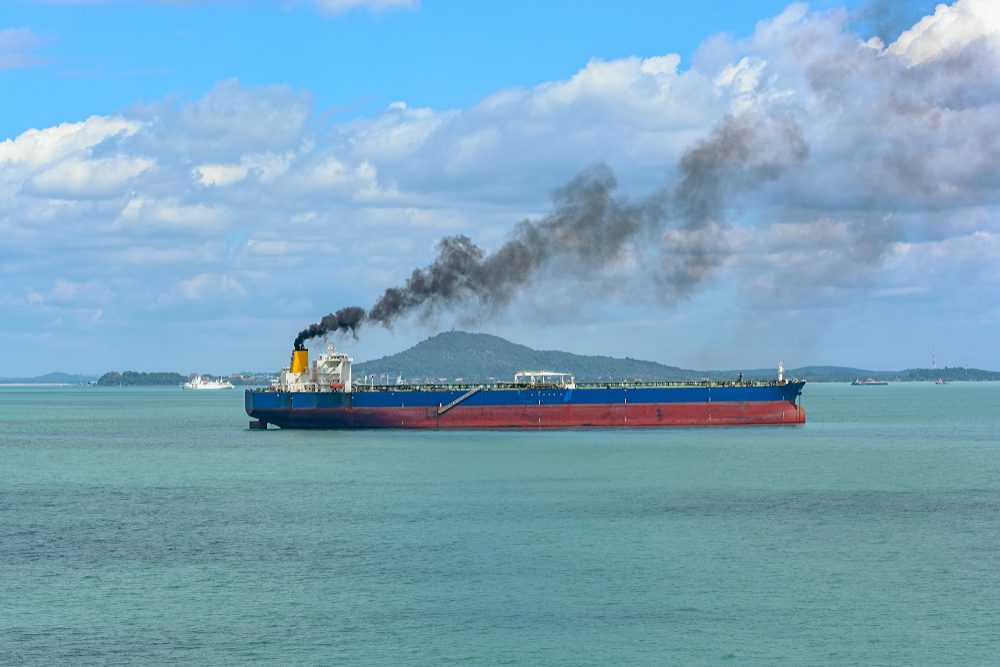Houthi Video Shows Sinking of M/V Magic Seas in Red Sea
Yemen’s Houthi militants have released propaganda footage appearing to show the Greek bulk carrier M/V Magic Seas sinking in the Red Sea following their attack on July 6. The vessel...

FILE PHOTO: Igor Grochev / Shutterstock
By Jack Wittels
Apr 11, 2025 (Bloomberg) –Shipping’s international regulator agreed new rules to slash the industry’s future greenhouse gas emissions, paving the way for the end of oil as a maritime fuel in the decades to come.
The UN’s International Maritime Organization approved draft amendments to MARPOL Annex VI — the main treaty on preventing air pollution from ships — that will force the industry to reduce and pay for at least some of its emissions. The agreement comes despite the US earlier abandoning the talks that forged the rules.
Related Article: U.S. Withdraws from Critical IMO Climate Meeting, Threatens Retaliation Over Emissions Pricing
The rules still need to pass the potentially significant hurdle of adoption at the IMO, which is scheduled for October. They would then come into force in the spring of 2027 and be legally binding.
The agreement is “an important step towards the first global greenhouse gas price structure for any industry,” shipping giant A.P. Moller-Maersk A/S said in a statement. “It provides needed signals to ship owners and fuel providers on the path forward.”
The regulations aren’t a blanket charge on all emissions. Rather, they require a gradual reduction in the amount of so-called greenhouse gas ships can emit relative to the energy they use. For instance, a vessel running on oil would have a higher GHG intensity than an otherwise identical ship running on a low-carbon fuel.
Ultimately, the rules are aimed at slashing ships GHG emissions and getting to net zero by mid-century — a target set by the IMO back in 2023. That almost certainly means weaning vessels off oil, the fuel used by the vast majority of the world’s merchant fleet today.

Ships that don’t reduce their intensity of GHG emissions – including carbon dioxide, methane and nitrous oxide — in line with two reduction trajectories outlined in the regulations are deemed to have an emissions “deficit.”
This must then be addressed by buying “remedial units.” For compliance with a so-called “base target” trajectory, the units will cost $380 per ton of CO2-equivalent emissions. For what is called a “direct compliance” target, they’ll cost $100. Both prices are only for 2028-2030, with future figures to be decided at a later date.
Deficits for complying with the base target can also be balanced by using surplus units that are either transferred from another, cleaner ship — in what is effectively a trading system — or that were previously banked.
The US exiting the IMO talks had a limited impact on the discussions.

While it’s economically and diplomatically powerful, the country’s fleet of commercial ships is relatively small. That’s important because so-called flag-states — the places where vessels are registered — are integral to implementing the IMO’s air-pollution rules.
© 2025 Bloomberg L.P.

Sign up for gCaptain’s newsletter and never miss an update

Subscribe to gCaptain Daily and stay informed with the latest global maritime and offshore news


Stay informed with the latest maritime and offshore news, delivered daily straight to your inbox
Essential news coupled with the finest maritime content sourced from across the globe.
Sign Up